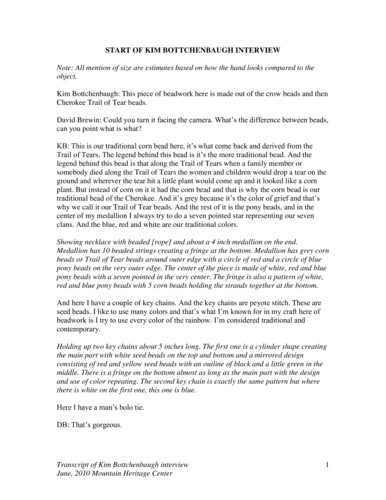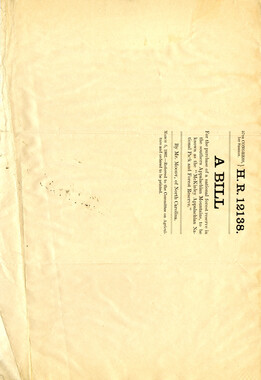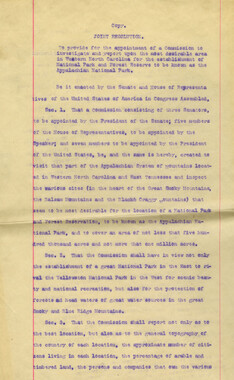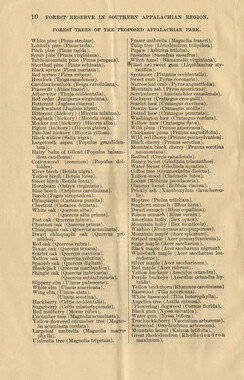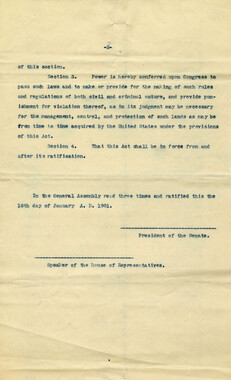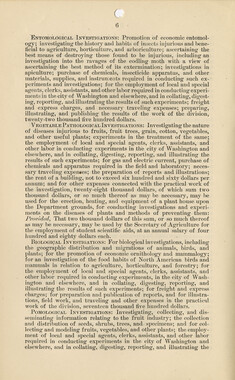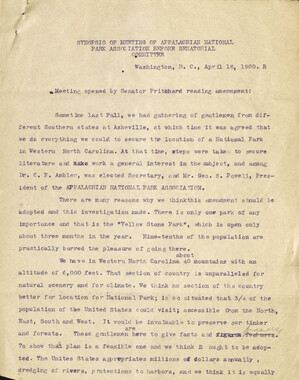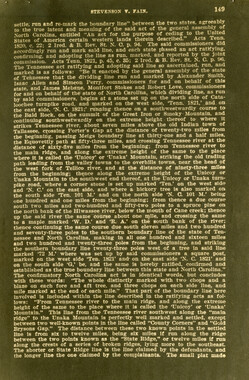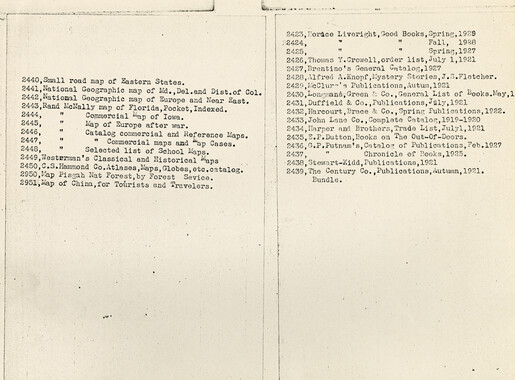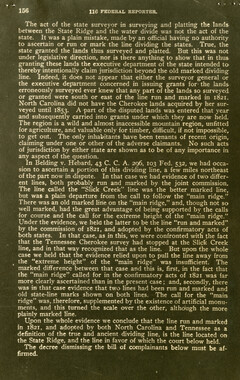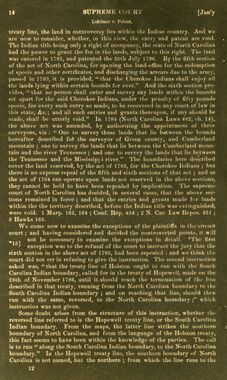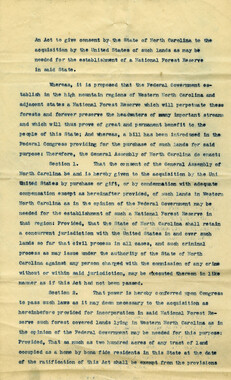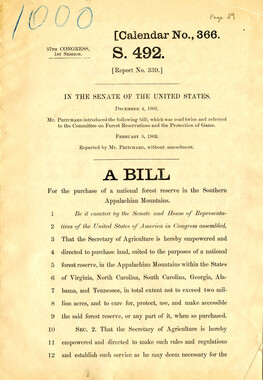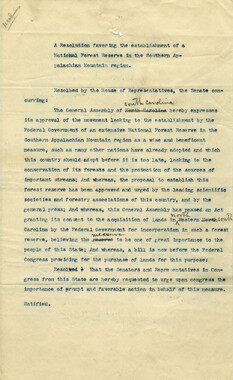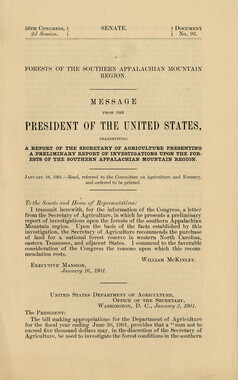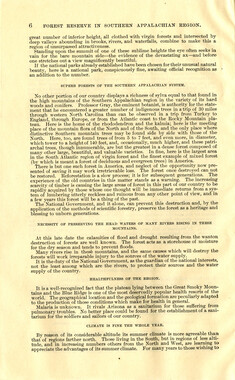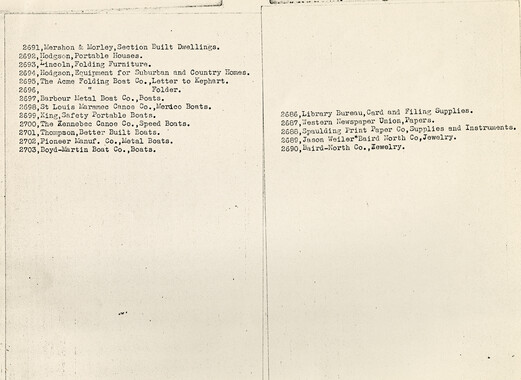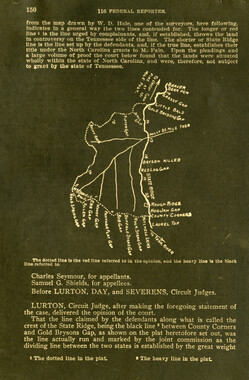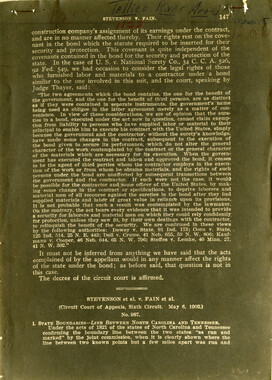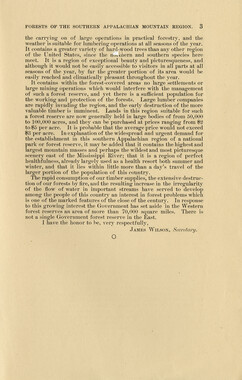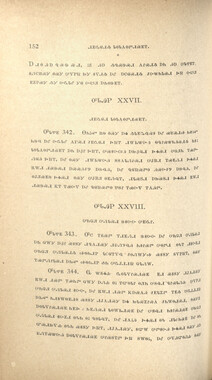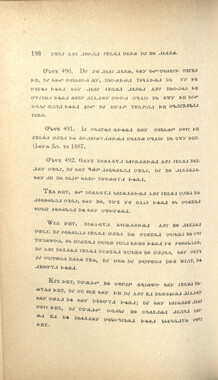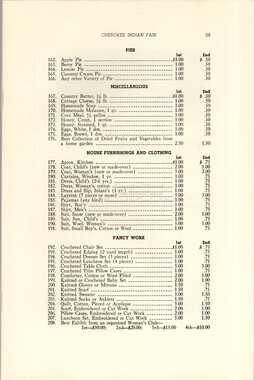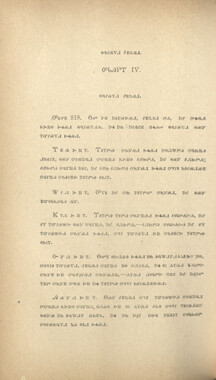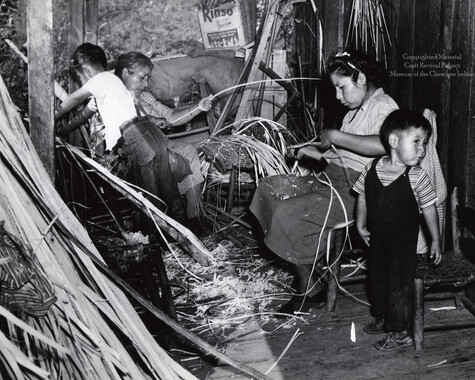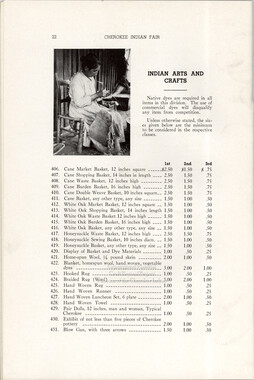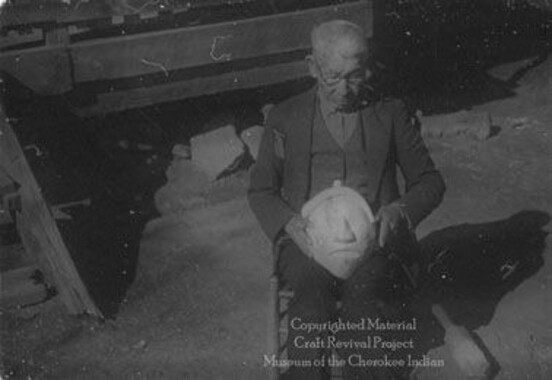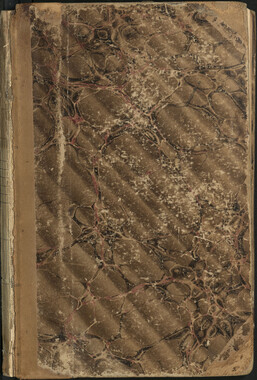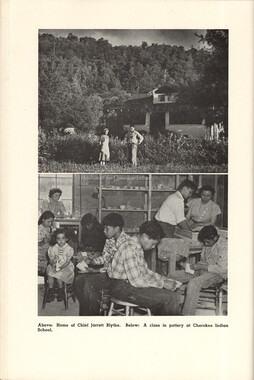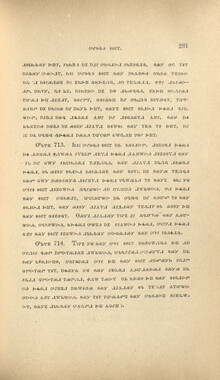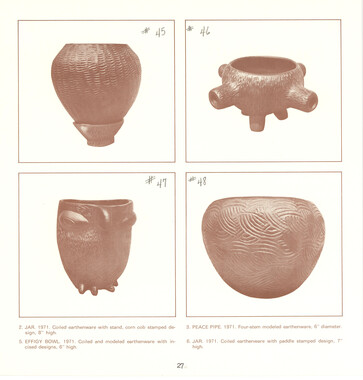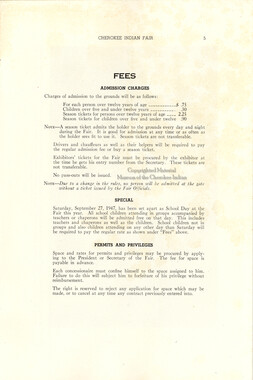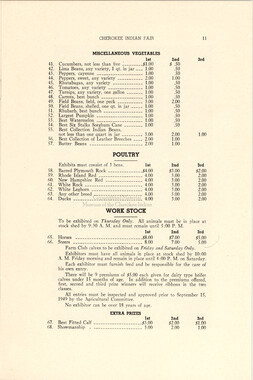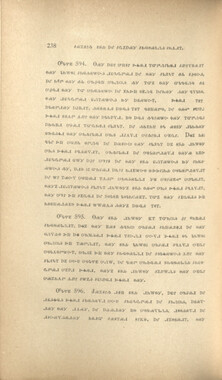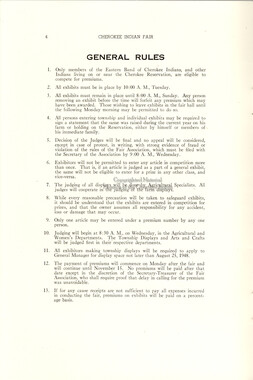Western Carolina University (3)
View all
- Cherokee Traditions (12)
- Craft Revival (6)
- LGBTQIA+ Archive of Jackson County (4)
- Canton Champion Fibre Company (0)
- Civil War in Southern Appalachia (0)
- Great Smoky Mountains - A Park for America (0)
- Highlights from Western Carolina University (0)
- Horace Kephart (0)
- Journeys Through Jackson (0)
- Oral Histories of Western North Carolina (0)
- Picturing Appalachia (0)
- Stories of Mountain Folk (0)
- Travel Western North Carolina (0)
- Western Carolina University Fine Art Museum Vitreograph Collection (0)
- Western Carolina University Herbarium (0)
- Western Carolina University: Making Memories (0)
- Western Carolina University Publications (0)
- Western Carolina University Restricted Electronic Theses and Dissertations (0)
- Western North Carolina Regional Maps (0)
- World War II in Southern Appalachia (0)
University of North Carolina Asheville (0)
View all
- Faces of Asheville (0)
- Forestry in Western North Carolina (0)
- Grove Park Inn Photograph Collection (0)
- Isaiah Rice Photograph Collection (0)
- Morse Family Chimney Rock Park Collection (0)
- Picturing Asheville and Western North Carolina (0)
- Western Carolina University. Mountain Heritage Center (12)
- Allanstand Cottage Industries (0)
- Appalachian National Park Association (0)
- Bennett, Kelly, 1890-1974 (0)
- Berry, Walter (0)
- Brasstown Carvers (0)
- Cain, Doreyl Ammons (0)
- Carver, George Washington, 1864?-1943 (0)
- Cathey, Joseph, 1803-1874 (0)
- Champion Fibre Company (0)
- Champion Paper and Fibre Company (0)
- Cherokee Indian Fair Association (0)
- Cherokee Language Program (0)
- Crittenden, Lorraine (0)
- Crowe, Amanda (0)
- Edmonston, Thomas Benton, 1842-1907 (0)
- Ensley, A. L. (Abraham Lincoln), 1865-1948 (0)
- Fromer, Irving Rhodes, 1913-1994 (0)
- George Butz (BFS 1907) (0)
- Goodrich, Frances Louisa (0)
- Grant, George Alexander, 1891-1964 (0)
- Heard, Marian Gladys (0)
- Kephart, Calvin, 1883-1969 (0)
- Kephart, Horace, 1862-1931 (0)
- Kephart, Laura, 1862-1954 (0)
- Laney, Gideon Thomas, 1889-1976 (0)
- Masa, George, 1881-1933 (0)
- McElhinney, William Julian, 1896-1953 (0)
- Niggli, Josephina, 1910-1983 (0)
- North Carolina Park Commission (0)
- Osborne, Kezia Stradley (0)
- Owens, Samuel Robert, 1918-1995 (0)
- Penland Weavers and Potters (0)
- Rhodes, Judy (0)
- Roberts, Vivienne (0)
- Roth, Albert, 1890-1974 (0)
- Schenck, Carl Alwin, 1868-1955 (0)
- Sherrill's Photography Studio (0)
- Smith, Edward Clark (0)
- Southern Highland Handicraft Guild (0)
- Southern Highlanders, Inc. (0)
- Stalcup, Jesse Bryson (0)
- Stearns, I. K. (0)
- Thompson, James Edward, 1880-1976 (0)
- United States. Indian Arts and Crafts Board (0)
- USFS (0)
- Vance, Zebulon Baird, 1830-1894 (0)
- Weaver, Zebulon, 1872-1948 (0)
- Western Carolina College (0)
- Western Carolina Teachers College (0)
- Western Carolina University (0)
- Whitman, Walt, 1819-1892 (0)
- Wilburn, Hiram Coleman, 1880-1967 (0)
- Williams, Isadora (0)
- 2000s (2)
- 2010s (12)
- 1600s (0)
- 1700s (0)
- 1800s (0)
- 1810s (0)
- 1820s (0)
- 1830s (0)
- 1840s (0)
- 1850s (0)
- 1860s (0)
- 1870s (0)
- 1880s (0)
- 1890s (0)
- 1900s (0)
- 1910s (0)
- 1920s (0)
- 1930s (0)
- 1940s (0)
- 1950s (0)
- 1960s (0)
- 1970s (0)
- 1980s (0)
- 1990s (0)
- 2020s (0)
- Qualla Boundary (12)
- Appalachian Region, Southern (0)
- Asheville (N.C.) (0)
- Avery County (N.C.) (0)
- Blount County (Tenn.) (0)
- Buncombe County (N.C.) (0)
- Cherokee County (N.C.) (0)
- Clay County (N.C.) (0)
- Graham County (N.C.) (0)
- Great Smoky Mountains National Park (N.C. and Tenn.) (0)
- Haywood County (N.C.) (0)
- Henderson County (N.C.) (0)
- Jackson County (N.C.) (0)
- Knox County (Tenn.) (0)
- Knoxville (Tenn.) (0)
- Lake Santeetlah (N.C.) (0)
- Macon County (N.C.) (0)
- Madison County (N.C.) (0)
- McDowell County (N.C.) (0)
- Mitchell County (N.C.) (0)
- Polk County (N.C.) (0)
- Rutherford County (N.C.) (0)
- Swain County (N.C.) (0)
- Transylvania County (N.C.) (0)
- Watauga County (N.C.) (0)
- Waynesville (N.C.) (0)
- Yancey County (N.C.) (0)
- Clippings (information Artifacts) (1)
- Fiction (general Genre) (3)
- Fliers (printed Matter) (3)
- Interviews (12)
- Newsletters (1)
- Photographs (208)
- Poetry (1)
- Publications (documents) (45)
- Sound Recordings (22)
- Video Recordings (physical Artifacts) (12)
- Aerial Photographs (0)
- Aerial Views (0)
- Albums (books) (0)
- Articles (0)
- Artifacts (object Genre) (0)
- Bibliographies (0)
- Biography (general Genre) (0)
- Cards (information Artifacts) (0)
- Crafts (art Genres) (0)
- Depictions (visual Works) (0)
- Design Drawings (0)
- Drawings (visual Works) (0)
- Envelopes (0)
- Facsimiles (reproductions) (0)
- Financial Records (0)
- Glass Plate Negatives (0)
- Guidebooks (0)
- Internegatives (0)
- Land Surveys (0)
- Letters (correspondence) (0)
- Manuscripts (documents) (0)
- Maps (documents) (0)
- Memorandums (0)
- Minutes (administrative Records) (0)
- Negatives (photographs) (0)
- Newspapers (0)
- Occupation Currency (0)
- Paintings (visual Works) (0)
- Pen And Ink Drawings (0)
- Periodicals (0)
- Personal Narratives (0)
- Plans (maps) (0)
- Portraits (0)
- Postcards (0)
- Programs (documents) (0)
- Questionnaires (0)
- Scrapbooks (0)
- Sheet Music (0)
- Slides (photographs) (0)
- Songs (musical Compositions) (0)
- Specimens (0)
- Speeches (documents) (0)
- Text Messages (0)
- Tintypes (photographs) (0)
- Transcripts (0)
- Vitreographs (0)
- Qualla Arts and Crafts Mutual Collection (12)
- A.L. Ensley Collection (0)
- Appalachian Industrial School Records (0)
- Appalachian National Park Association Records (0)
- Axley-Meroney Collection (0)
- Bayard Wootten Photograph Collection (0)
- Bethel Rural Community Organization Collection (0)
- Blumer Collection (0)
- C.W. Slagle Collection (0)
- Canton Area Historical Museum (0)
- Carlos C. Campbell Collection (0)
- Cataloochee History Project (0)
- Cherokee Studies Collection (0)
- Daisy Dame Photograph Album (0)
- Daniel Boone VI Collection (0)
- Doris Ulmann Photograph Collection (0)
- Elizabeth H. Lasley Collection (0)
- Elizabeth Woolworth Szold Fleharty Collection (0)
- Frank Fry Collection (0)
- George Masa Collection (0)
- Gideon Laney Collection (0)
- Hazel Scarborough Collection (0)
- Hiram C. Wilburn Papers (0)
- Historic Photographs Collection (0)
- Horace Kephart Collection (0)
- Humbard Collection (0)
- Hunter and Weaver Families Collection (0)
- I. D. Blumenthal Collection (0)
- Isadora Williams Collection (0)
- Jesse Bryson Stalcup Collection (0)
- Jim Thompson Collection (0)
- John B. Battle Collection (0)
- John C. Campbell Folk School Records (0)
- John Parris Collection (0)
- Judaculla Rock project (0)
- Kelly Bennett Collection (0)
- Love Family Papers (0)
- Major Wiley Parris Civil War Letters (0)
- Map Collection (0)
- McFee-Misemer Civil War Letters (0)
- Mountain Heritage Center Collection (0)
- Norburn - Robertson - Thomson Families Collection (0)
- Pauline Hood Collection (0)
- Pre-Guild Collection (0)
- R.A. Romanes Collection (0)
- Rosser H. Taylor Collection (0)
- Samuel Robert Owens Collection (0)
- Sara Madison Collection (0)
- Sherrill Studio Photo Collection (0)
- Smoky Mountains Hiking Club Collection (0)
- Stories of Mountain Folk - Radio Programs (0)
- The Reporter, Western Carolina University (0)
- Venoy and Elizabeth Reed Collection (0)
- WCU Gender and Sexuality Oral History Project (0)
- WCU Mountain Heritage Center Oral Histories (0)
- WCU Oral History Collection - Mountain People, Mountain Lives (0)
- WCU Students Newspapers Collection (0)
- Western North Carolina Tomorrow Black Oral History Project (0)
- William Williams Stringfield Collection (0)
- Zebulon Weaver Collection (0)
- Cherokee art (9)
- Cherokee artists -- North Carolina (10)
- Cherokee language (1)
- Cherokee pottery (2)
- African Americans (0)
- Appalachian Trail (0)
- Artisans (0)
- Cherokee women (0)
- Church buildings (0)
- Civilian Conservation Corps (U.S.) (0)
- College student newspapers and periodicals (0)
- Dams (0)
- Dance (0)
- Education (0)
- Floods (0)
- Folk music (0)
- Forced removal, 1813-1903 (0)
- Forest conservation (0)
- Forests and forestry (0)
- Gender nonconformity (0)
- Great Smoky Mountains National Park (N.C. and Tenn.) (0)
- Hunting (0)
- Landscape photography (0)
- Logging (0)
- Maps (0)
- Mines and mineral resources (0)
- North Carolina -- Maps (0)
- Paper industry (0)
- Postcards (0)
- Pottery (0)
- Railroad trains (0)
- Rural electrification -- North Carolina, Western (0)
- School integration -- Southern States (0)
- Segregation -- North Carolina, Western (0)
- Slavery (0)
- Sports (0)
- Storytelling (0)
- Waterfalls -- Great Smoky Mountains (N.C. and Tenn.) (0)
- Weaving -- Appalachian Region, Southern (0)
- Wood-carving -- Appalachian Region, Southern (0)
- World War, 1939-1945 (0)
- MovingImage (12)
- Text (12)
- Sound (0)
- StillImage (0)
Kim Bottchenbaugh: Cherokee Bead Worker
Item
Item’s are ‘child’ level descriptions to ‘parent’ objects, (e.g. one page of a whole book).
-
-
Transcript of Kim Bottchenbaugh interview June, 2010 Mountain Heritage Center 1 START OF KIM BOTTCHENBAUGH INTERVIEW Note: All mention of size are estimates based on how the hand looks compared to the object. Kim Bottchenbaugh: This piece of beadwork here is made out of the crow beads and then Cherokee Trail of Tear beads. David Brewin: Could you turn it facing the camera. What’s the difference between beads, can you point what is what? KB: This is our traditional corn bead here, it’s what come back and derived from the Trail of Tears. The legend behind this bead is it’s the more traditional bead. And the legend behind this bead is that along the Trail of Tears when a family member or somebody died along the Trail of Tears the women and children would drop a tear on the ground and wherever the tear hit a little plant would come up and it looked like a corn plant. But instead of corn on it it had the corn bead and that is why the corn bead is our traditional bead of the Cherokee. And it’s grey because it’s the color of grief and that’s why we call it our Trail of Tear beads. And the rest of it is the pony beads, and in the center of my medallion I always try to do a seven pointed star representing our seven clans. And the blue, red and white are our traditional colors. Showing necklace with beaded [rope] and about a 4 inch medallion on the end. Medallion has 10 beaded strings creating a fringe at the bottom. Medallion has grey corn beads or Trail of Tear beads around outer edge with a circle of red and a circle of blue pony beads on the very outer edge. The center of the piece is made of white, red and blue pony beads with a seven pointed in the very center. The fringe is also a pattern of white, red and blue pony beads with 5 corn beads holding the strands together at the bottom. And here I have a couple of key chains. And the key chains are peyote stitch. These are seed beads. I like to use many colors and that’s what I’m known for in my craft here of beadwork is I try to use every color of the rainbow. I’m considered traditional and contemporary. Holding up two key chains about 5 inches long. The first one is a cylinder shape creating the main part with white seed beads on the top and bottom and a mirrored design consisting of red and yellow seed beads with an outline of black and a little green in the middle. There is a fringe on the bottom almost as long as the main part with the design and use of color repeating. The second key chain is exactly the same pattern but where there is white on the first one, this one is blue. Here I have a man’s bolo tie. DB: That’s gorgeous. Transcript of Kim Bottchenbaugh interview June, 2010 Mountain Heritage Center 2 KB: The rope here is fully beaded and the bolo itself is the shape of a turtle. I like to use a lot of turtles because to the Cherokee the turtle is the meaning of life. And I use a lot of the blues inside here because it’s water in the sky and then the fire colors of the Cherokee. Holding up bolo tie. Rope is white with a pattern of blue red and yellow repeating near the bottom. Turtle shape is about 2 and a half inches long and about 2 inches wide. The head legs and tail are white, with nine blue peaks surrounding an oval of black, red, orange and yellow. DB: Let me get a better shot of it, a little flatter, I want people to be able to see that. KB: And here I have a set of ball sticks. They’re also made out of seed beads. Now the ball sticks used today in the ball stick game are more plain they don’t have the decoration all over them. And here I have used white buckskin to decorate them more. These would be more like hanging on your wall at home. But I like to bead things that are traditional to our people. Seed bead decoration on ball stick is about 6 inches long. It is a pattern of white with blue peaks along the top, a double row of black, red, orange and yellow. Then there is a section of white with blue beads dotted around in the center of the white and lower peaks of blue, black, red, orange and yellow. Next is a single row of blue, red, orange and yellow. The pattern then mirrors itself ending with white seed beads with blue peaks. DB: So they would have never been used at any point in a game? KB: No. Or you would bead them after your ball sticks are retired and use them as a decoration for your home. And here I have a walking cane. It’s fully beaded from the bottom to the top and this is an 1800’s rat stitch style bead work out of seed beads. DB: It’s a what style? KB: Rat stitch. And I made this more contemporary because the style back then was more plain like these, pointing to an area of the design that has rows of color with a diamond design in the middle, but where I am contemporary I added more of the peaks and everything inside there and added more design to it. The walking cane is fully beaded with blues, red, orange, yellow, black and white. The design is a combination of rows, peaks, and diamonds. And here I have a southern plains beaded buckskin bag. This is a different technique of beadwork. This is what you would call lazy stitch. I actually pick up about 9 beads at a time and do each row single-handed. This is made out of white buckskin with the fringe Transcript of Kim Bottchenbaugh interview June, 2010 Mountain Heritage Center 3 and everything. This is something that they would wear when they’d go hunting or fishing to carry their supplies. The bag is white buckskin about 6 by 6 inches with a four inch long buckskin fringe along the bottom. The outer edge of the bag is done with a single row of blue beads. About a half inch from that starts a 9-bead wide row of colorful stripes and peaks continuing around the edge of the bag and the flap of the bag. In the middle area of the bag are four dark and light blue plus sign shapes. DB: Do you sew the buckskin too yourself? KB: Yeah, and we’re actually, my family and I are actually learning how to do the hides naturally and that’s a long process. Well that’s twisting up on me. And here I have an 1800’s style bandolier bag. Now the hunters and our people used these everywhere they went, they weren’t as decorated back then with the yarn that’s more contemporary but the beadwork is more 1800’s style. DB: What makes it 1800 style? KB: The beadwork on here is more elaborate I guess you would say. And the 1700’s style is more just triangles and lines and simple designs. But the 1800’s we got to learn more of what we could do with the beads so we started making more floral designs. And to the Cherokee, we were kind of I guess related to Seminole and Creek, and also the Iroquois, but if you don’t know the difference, you have to look real close and see the difference between the styles of the floral work in the 1800’s. DB: The silver pins on there, what is that? KB: Those are just silver broaches. Back in the 1700’s and 1800’s the Cherokee became great silversmiths. So they learned how to do these silver broaches and everything and they would decorate their shirts, their leggings, their bags, whatever they wore they would decorate those. And then when we came into contact with the white man this made us look more elaborate and more business like. DB: Just a second. Filming full bag. Bandolier bag is about 12 inches wide by 13 inches tall. The bag and strap have blue fabric around the edges with yellow fabric in the middle. the top3 or 4 inches of the bag has red fabric surrounded by a strip of blue.. Just inside the blue fabric is a single row of white beads with a space in between each bead. The beadwork on the bag is a floral design with three silver broaches down the center. Just below the broaches is a flower with four petals of white, blue, light blue and red and the center orange and yellow with one blue bead at the very center. Coming from that flower on either side is a yellow stem with two yellow and green leaves on each side. These flowers are tulip shaped and are blue, red, orange and yellow. The flap has the same floral design with shorter stems Transcript of Kim Bottchenbaugh interview June, 2010 Mountain Heritage Center 4 coming off the center flower. There are ten white yarn tassels along the bottom each adorned with one larger clear blue bead near the top. There are also two tassels on each side of the strap which has a beaded, flowing, curvy line of rainbow colors. KB: That’s it. DB: Wait for Tonya to get back in. I want to find out about the buttons. Is that a pattern from an 1800’s button up there on the uh. KB: Well originally these buttons would have also been silver. But I didn’t have enough silver. Silver is hard to come by and expensive today, so I did a mock button. But what the button represents, is this helps this rotate here so they can have easy access to the inside of the bag. Showing a button on either side of bandolier bag holding strap onto bag. The button is silver in color. Kim Shows how easily strap moves back and forth. DB: Can you go back and talk about those row of beads around the things down there. when you were talking about single beads. KB: If you’ll notice here, the single beads they have a little bit of room in between. This is more 1700’s style that I’ve mixed with my 1800’s style. We were just learning how to use the beads and everything. So we kind of had them spaced out and made designs. This is just simple way of doing things. Until we got to learning how to do the more floral work and the more intricate beading. DB: Were the Cherokee, I guess the Cherokees were getting this from the white traders that were coming through? KB: Yeah, we were trading with the British at that time. We traded with the British and the only colors of materials that we could get back then were blue and red and white, or a muslin color and later on in the 1800’s we had yellow and green. DB: What about this bag? Showing bag with strap. The material is red with brown fabric edges. Beadwork design is a variety of zig- zags, S shapes, a diamond, and a peak. It is more simple than the last bag with spaces in between beads. Stitching is white and spaced out. The flap is a peak shape. The bag is lined with white material with brown stripes that looks like an old mattress material. There are also silver rings and buttons on the strap and a silver ring on the flap. KB: This bag is derived more from the 1700’s style. As you can tell the bead work is spaced out a little bit and the designs are more simple than what was on the other bag. Of course you had the silver decorating this. Now on this bag we also had a flap that was more 1700’s style. Until we learned how to get a little bit fancier and change our design. Transcript of Kim Bottchenbaugh interview June, 2010 Mountain Heritage Center 5 DB: Can you turn the flap up again and get a shot of that. Looks like that mattress stuff is that what that is? KB: Well back then we had only limited material that we could use and this is one of them that was a limited color that we could get. So and the whole bag itself is backed inside and out with this material and we could only use material that we could trade for. We started using material because leather was so hard to sew and everything. DB: That stitching is kind of simple too, is that [inaudible] KB: The stitch is real simple. It’s more the 1700’s style and as you can tell we got just like diamond shapes or peaks it was more 1700’s style beadwork. Tonya Carol: It’s my stitch that’s why it looks so simple. [laugh] DB: Did you make the bag? KB: She made the bag all I did was bead it. So she did everything. TC: I don’t know that the stitching would have been [inaudible] that was my first attempt at it. DB: I think you did a good job it’s a beautiful bag. KB: I think she did too. TC: Kim helped me a lot. KB: We’re going to bead her skirt and leggings too as soon as she gets them. DB: Alrighty, any time you’re ready. TC: Okay what traditional Cherokee craft do you make? KB: Traditional Cherokee crafts, I can do a lot of the 1700’s, 1800’s style Cherokee wear. With the beadwork, I can explain the difference in the beadwork on both styles to you. As far as Cherokee traditional crafts I like to use the corn bead in my beadwork a lot because the corn bead represents our people. And I’m also a contemporary bead worker. And what I mean by saying contemporary I use more intricate designs and more colors. I try to use every color of the rainbow. TC: What are some of the things that you bead that are [contemporary]. KB: A lot of the contemporary beadwork that I do could be like key chains earrings, there’s no traditional style to them, it’s just getting them to look pretty and hang right and Transcript of Kim Bottchenbaugh interview June, 2010 Mountain Heritage Center 6 using a lot of color and a lot of my bead work sparkle so I use a lot of glass beads. I use nothing imitation or plastic or anything like that and um, I feel like using real materials upgrades my work among others. TC: I know that you do a lot of beadwork on outfits that are used for Pow Wow dancing, can you talk a little bit about that. KB: Pow Wow dancing outfits, that’s a more contemporary beadwork. Pow Wow dancing I’ve learned other traditional beadwork such as Sioux, Crow, Blackfoot, [Dakota seed], there’s Dakota seed, and Flathead beadwork. Learning to do beadwork for these other tribes has also taught me a lot. I know a lot of their traditional colors and doing the powwow beadwork has taught me, I can dress a person from head to toe with beadwork. I can do shoes, moccasins, leggings, skirts, like of the northern women traditional, the whole cape is fully beaded, which usually consists of 3 or 4 kilos of beads on one cape. I’ve also done crowns for the southern women, and I can actually bead under the buckskin, for the southern buckskin women. I have done traditional men’s outfits with the fully beaded vests front and back and the bridge cloths and their moccasins, everything match. It’s just taught me a whole lot about bead work. TC: Have the materials that you use for your beadwork always been used? KB: No through the years the materials they have changed over the years. Like now we have a lot of sparkly beads which are called [cope] beads. And we also like in the more contemporary world we put rhinestones in with our beadwork, makes them sparkle, and it just brings the whole piece of work out better. TC: Why do you think beadwork became so important for the different tribes to have on their outfits. KB: I think the difference of the beadwork is it shows who you are, where you come from. Like I was saying before the different colors represent different tribes. Although we may use the same colors they are put together in a different order and that’s how you can tell the difference in the tribes. Some tribes may use more reds, some may use more blues. But the difference in the technique. Floral designs they are different between the Cherokee, the Choctaw the Seminole the Creek, the Iroquois. We all use floral designs but there are differences in the flowers and everything that we bead and put on the garments. DB: Tonya could you move down there so I can pick your voice up a little bit better, down there on that end. Thank you. TC: Can you tell me al little bit more about the Cherokee designs and colors? KB: The Cherokee designs and colors, really the black and red, we use that a lot. Back in the 1700’s that meant war. When you seen a Cherokee dressed in black and red you knew they were going to war. That was their war colors. Our other traditional colors were blue, Transcript of Kim Bottchenbaugh interview June, 2010 Mountain Heritage Center 7 red and white. And that was more of our daily colors that we used. And with that bead work it was more simple, more plain, and the three colors was about the only three colors that we could get at that time and that’s what we traded with the British for back then. And we were limited in color back then. TC: Can you talk about how long the process takes for different things? KB: Well the process of doing any one certain thing. It just all depends on how small or how big your project is. Take for instance the beaded cane here that I’ve done. A lot of people would think that would have taken me weeks, it took me 4 days to do that whole cane from beginning to end. It just depends on what your project is, how long you’ve been doing beadwork, I’ve been doing beadwork for 22 years now. And so a lot of it just comes easy to me. I don’t draw out my designs before I start, it just comes to me as I go. TC: You said you’ve been doing beadwork for 22 years, how did you learn? KB: I am self taught. The only person I knew that did beadwork in my family was my aunt. She didn’t live around here. And when she would come in there was never time for her to teach me so I finally got my mom and dad to buy me some beads from Medicine Man Crafts, I did a lot of mistakes back then. I made crappy looking earrings, or barrettes, or whatever, and but as far as the loom work and the key chains and the simple stuff. My grandfather actually made my first loom. And I just sit down by trial and error I finally made a little hair barrette that I wore. It was all clumpy and messy, but now there’s a difference. [laugh] TC: Can you tell me a little bit about the different styles of bead [inaudible] you mentioned the loom, the free hand. KB: The different styles that I have here with me, this one would be called appliqué stitch, this is where I pick up. I start with the center bead and work my way out. I start out with that one bead and I pick up 5 each time and go back through to make one side [inaudible] and that’s what I call the appliqué stitch. Showing first medallion with the corn and pony beads. Points to the center bead and makes a circular motion to show how she works her way from the center out. And the keychain here is peyote stitch. That is one bead at a time, you start with the first row around and then you pick up one bead at a time to make the design until you get to the end of your craft. Showing key chain. This is lazy stitch. And this here is a little different. It’s lazy stitch. I’ll probably pick up 9 beads and do each row single until I make my design. But the lazy stitch is called lazy because you can pick up more than one bead at a time and make rows with beadwork. Transcript of Kim Bottchenbaugh interview June, 2010 Mountain Heritage Center 8 Showing first bandolier bag. Pointing to rows of 9 beads along the outer edge of the bag. TC: So why did you become interested in learning how to make beadwork? KB: When I was younger we use to go to the fair, the Cherokee Indian fair and I’d see all this beadwork sitting up there on the shelf. And I was just so intrigued by some of the beadwork that was there and I always wanted to learn. And when I tried to get into the beadwork class at the Cherokee Arts and Crafts class in high school it was always full. So I had already picked up some beads before that, and I thought, well I’m not going to give up, I’m going to keep on. And it just continued on from there, I never gave up. TC: Can you tell me about some of the traditional designs that you might use in your beadwork? KB: Some of the traditional designs I try to use in all my bolo ties, barrettes and everything I try to put the 7 pointed star in a lot of my stuff, and it represents all of our 7 clans. And a lot of the mountain peaks that you see in my beadwork, those represent the mountains that we live in. And of course the colors are of course for the color of water for which we need to live and the fire colors that the Cherokee love to use. TC: Can you talk a little bit more about the fire colors? KB: The fire colors derive from what we see on the earth. Like in the fall you see the bright reds, oranges, yellows in the leaves and everything. Of course you’ve got the sky and to the Cherokee people, every color, every design, every little thing mattered. So that’s what we try to do a lot of our crafts from is what we seen in the world. So then that’s how we learn to put a lot of our colors together is from what we’ve seen out here in the world. TC: How have you noticed beadwork change over time? KB: Beadwork has changed over time, like I said, I’ve had to study with the 1700’s. I’ve only studied from the 1700’s up, to this day and like I was saying the 1700’s style is simple and even in the [60] years from the 1750’s to the 1800’s it changed dramatically cause we got to trade for more colors of beads. And today there are so many colors that you can buy with beads. That’s why I call myself a contemporary bead worker also. I love to use every color of the rainbow, the blues, the purples the greens, anything that I can put in my beadwork I try to change. Like you can just about put any kind of design, figure whatever design, into whatever piece that you’re making. TC: Have you or are you passing the craft or art of beadwork onto younger generations? KB: I tried to pass on the beadwork craft to anyone who will learn. I teach at schools. I do different classes with different types of beadwork. My children, they know how to do beadwork, my daughter especially, she’s been beading since she was 8 years old and Transcript of Kim Bottchenbaugh interview June, 2010 Mountain Heritage Center 9 she’s almost 16 now and you can hardly tell the difference between mine and her beadwork. Anyone who will learn I’m happy to teach. TC: Can you recognize your own work if you saw it? KB: Yes I can recognize my own work. TC: How do you know it’s yours? KB: Well if you put my work by, I’m not putting anybody else down, but a lot of other bead workers, bead crafters, I use more color, and I use a smaller bead than other bead workers use. And my designs, I try to make them different from anyone else’s designs. I try to make my own. TC: Can you describe or do you remember the first time you finished your first piece of beadwork? KB: The very first time we’ll get back to that barrette I was talking about. I thought it was just something until I went down to the stores in Cherokee and there was some beadwork laying there, and I was so proud of my little barrette which was just all clumpy and everything. So I knew I needed to go home and practice more. But I was just so glad that I had finished something. And I did and it was a step forward. TC: What about the first time that somebody paid you for your bead work? KB: The first time anyone paid me for my beadwork, I was so thrilled. I thought, this is going to happen, I’m going to do this. From that time on I just kept practicing, my beadwork got better and now I make my living off of beadwork today. TC: Can you explain the importance of or [meaning to] the Cherokee people about beadwork. KB: The Cherokee people have been doing beadwork for many centuries now and I think just as all, as the other crafts, woodcarving, pottery making, whatever the craft may be, basket making, we need to keep that alive I mean for our future generations, keep the history going. That’s very important. TC: When did you realize, or do you realize that you are a Cherokee tradition bearer? KB: I didn’t realize that until a few years ago. And it all started out when I was asked to be a Cherokee Friend for the Qualla Arts and Crafts. And I never realized how much I knew up until that point until we started putting outfits together for our jobs and how important it was to carry myself that way, and I’m proud that we all got together and did that. And along with that job, I introduced the Cherokee animal dances and everything, with our job and that became part of our job. And the last year that we were Cherokee Friends, my son also came along and he actually helped sing and everything. So that’s Transcript of Kim Bottchenbaugh interview June, 2010 Mountain Heritage Center 10 kind of what helped me know that I was carrying on Cherokee traditions, because we taught younger people, we’d go to the schools, we’d go to the nursing home, the hospital on rainy days and visit people and we were carrying all of this on. I never realized how important it was until a lot of people started requesting I may talk, or I may bead, whatever the case might be. TC: So do you feel any obligation by holding the title of tradition bearer? KB: I want that obligation because it means so much to me to be able to teach. Especially my own people who are naïve in their traditions and everything. People my age, they used to make fun of us in school, because we were doing the Cherokee dances and being traditional and now all of those people want to learn. So I feel like it is my obligation to teach other people who don’t know our Cherokee traditions or a craft or whatever. I’m willing to learn other crafts and teach those if necessary, just to keep our traditions alive. TC: How does it make you feel that the Cherokee people consider you a tradition bearer and look up to you holding that title? KB: I’m proud. It makes me proud to feel like you know and a lot of them they ask me to do things are elders. And that gives me a high sense of pride. TC: Are you worried about the traditions or the artwork dying out? KB: Yes I am worried, but the good thing about that is now they’re teaching it in the schools, even our public schools, they ask different artists to come and teach at the public schools which I think is a great idea. TC: Do you make other Cherokee artwork or crafts, or carry on other Cherokee traditions other than the beadwork? KB: Well I can also do, I’m not too great at it but I can do honey suckle and white oak baskets, but I need to learn to make them set straight is the only thing. Pottery, I’ve done a couple of pieces, but I don’t have the patience for pottery, but like I say, I don’t mind learning a new craft. I would like to learn how to do some finger weaving. So. TC: So what is your favorite Cherokee craft or artwork to do? KB: My favorite Cherokee craft and artwork is doing the 1700’s or the 1800’s style Cherokee wear. I mean it’s so unlimited what you can do. TC: Can you talk a little bit about the clothing that you make? KB: The clothing, there’s different styles, as for the men’s leggings the 1700’s style the [tabs] come up the sides of the legs and then we have beadwork coming across the bottom of the ankle part. We also had the poker toes. They were plain in the 1700’s. The bridge cloths, they had bead work on them also. And we wore the baggy shirts back then Transcript of Kim Bottchenbaugh interview June, 2010 Mountain Heritage Center 11 and we did a lot of silver and more in the 1800’s with the other bead work it got more intricate down the leggings. The 1800’s style leggings the crease come up the front of the knee instead of the side on the men’s leggings. The women, it’s kind of limited in what we know about the women’s clothing. There’s not a lot of documentation of women’s clothing. We guestimate kind of how we decorate the men’s clothing, the women’s were probably the same. TC: You mentioned earlier about doing Cherokee dances, can you talk a little bit more about those that you did as a part of your job as a Cherokee Friend? KB: The Cherokee animal dances are social dances. Those are the dances we can share with the public. We also have our private dances that we still do yet that is not shared with the public. But the social dances they consist of the bear dance, the quail dance, the friendship dance, the corn dance, and they’re all Cherokee traditional dances. And they depict like a bear dance depicts the bear so when we’re going out to hunt the bear, we do a bear dance. It wasn’t just to celebrate the meat from the bear and the hide and whatever we use out of the bear, it also honored the bear. So the Cherokee people honored all these animals and we come up with these social dances that honored these animals for when we went out to kill them and use them for food. And we didn’t waste a lot of the animal, we used the bones, the innards, and everything, the hides, the feather, everything we tried to use. The Cherokee people didn’t waste any part of the animal. And the traditional dances we go out to like our Indian Fair, to colleges, schools, out here on the street sometimes, we do the Cherokee social dances just to share with the public, to let em know what the Cherokees did. And that was our social time those were our social dances where we got together and just had fun and danced and was together. TC: Who did you learn how to make the honeysuckle and white oak baskets from? KB: Actually Polly Ratner showed me how to do the honeysuckle baskets. And the white oak I didn’t know my mom made baskets and she’s the one who helped me with my first white Oak basket. TC: Do you have any more questions? DB: I can’t think of any, we had a good talk while you were gone. TC: Yeah, you did a good job. Is there anything that you would like to add? KB: shakes head no. DB: We’ve really got to get to your house to see examples. KB: [laugh] TC: [What do you mean you] don’t have patience to do pottery? Transcript of Kim Bottchenbaugh interview June, 2010 Mountain Heritage Center 12 KB: I don’t. END OF KIM BOTTCHENBAUGH INTERVIEW
Object
Object’s are ‘parent’ level descriptions to ‘children’ items, (e.g. a book with pages).
-
In this video interview, Kim Bottchenbaugh, Cherokee bead worker, incorporates symbolism in her choice of colors and patterns. These symbols illuminate much of her culture, such as the role her clan played in the village, the meaning of her family names, and her overlap of Sioux beadwork tradition. The transcript provided is an unedited version of the video.
-
